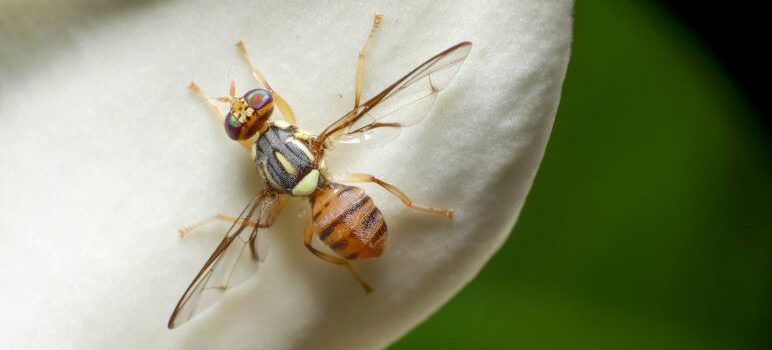A portion of Santa Clara County is under quarantine for the Oriental Fruit Fly, Actrocera Dorsalis, following the detection of six flies in and around the southern part of the City of San Jose, near the Santa Clara County Fairgrounds, state agriculture officials announced Tuesday.
Th quarantine zone measures 94 square miles, generally bordered on the north by the Alum Rock neighborhood, on the south by Santa Teresa County Park, on the west by South Bascom Avenue, and on the east by Joseph D. Grant County Park. Here is a link to the quarantine map.
To prevent the spread of oriental fruit flies through homegrown fruits and vegetables, residents living in the quarantine area are urged not to move those items from their property. The homegrown produce may be consumed or processed (i.e. juiced, frozen, cooked, or ground in the garbage disposal) on the property where they were grown, or disposed of by double-bagging, sealing, and placing in the regular trash bin, not green waste.
Following the principles of Integrated Pest Management (IPM), the California Department of Food and Agriculture primarily uses the “male attractant” technique to eradicate this pest. Trained workers squirt a small patch of fly attractant mixed with a very small dose of organic pesticide approximately 10 feet off the ground on street trees and similar surfaces; male fruit flies are attracted to the mixture and perish after consuming it. This approach has successfully eliminated dozens of fruit fly infestations from California over the last several decades, officials said.
The Oriental Fruit Fly is known to target over 230 different fruit, vegetable, and plant commodities. Damage occurs when the female fruit fly lays her eggs inside the fruit. The eggs hatch into maggots and tunnel through the flesh of the fruit, making it unfit for consumption.
While fruit flies and other invasive species that threaten California’s crops and natural environment are sometimes detected in agricultural areas, the vast majority are found in urban and suburban communities, CDFA said in a statement.
“The most common pathway for these pests to enter the state is by ‘hitchhiking’ in fruits and vegetables brought back illegally by travelers when they return from infested regions of the world or ship infested produce through the mail,” according to CDFA. For information about how to protect California’s agricultural and natural resources; follow guidelines in Don’t Pack a Pest when traveling or mailing packages.
The Oriental Fruit Fly is widespread throughout much of southern mainland Asia and neighboring islands, including Sri Lanka and Taiwan, and it has invaded other areas, most notably Africa and Hawaii.
Residents with questions about the project may call CDFA’s Pest Hotline at 1-800-491-1899. Visit here for more information.


“The most common pathway for these pests to enter the state is by ‘hitchhiking’ in fruits and vegetables brought back illegally by travelers when they return from infested regions of the world or ship infested produce through the mail,”
Illegals brought in by illegals?
“Illegals brought in by illegals?” — Joe Smith
Maybe not; breaking news on CNN attributes the pests’ arrival to the new food craze that’s sweeping America: free range pangolin.